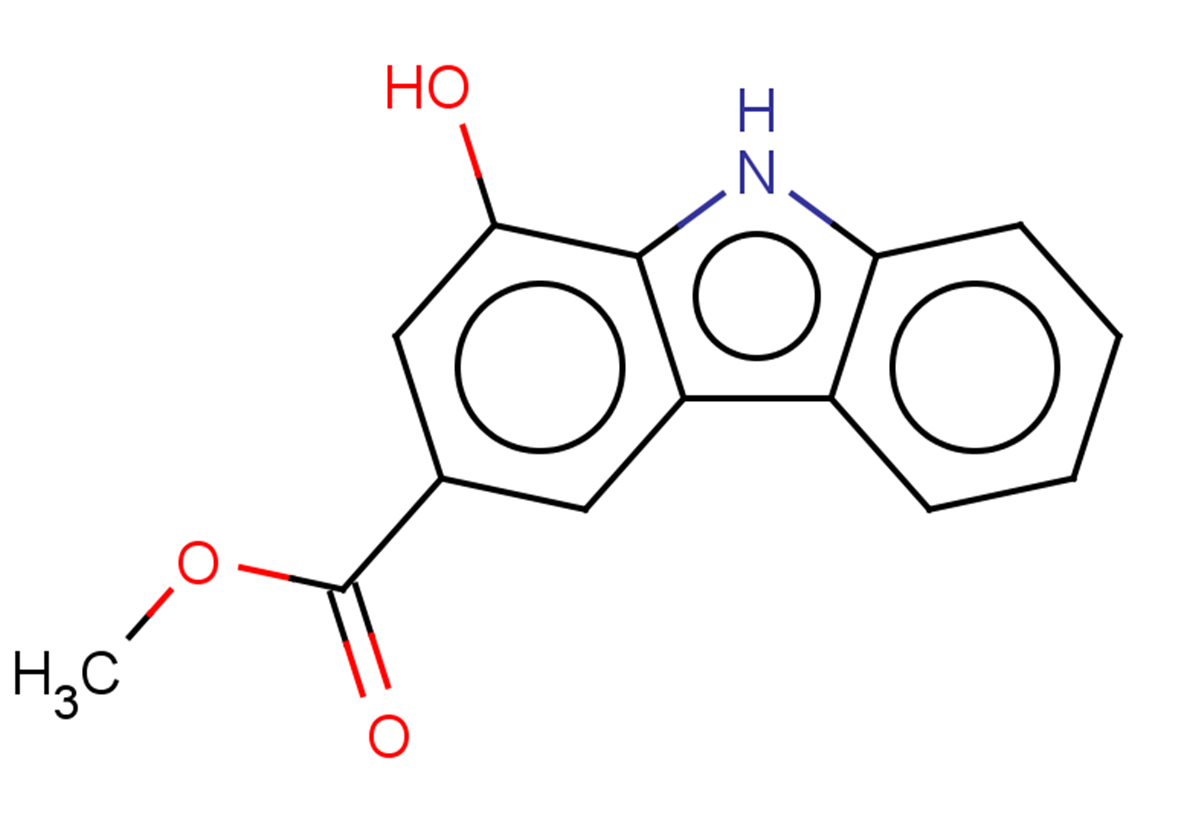
Clausine E
CAS No. 182261-83-2
Clausine E( —— )
Catalog No. M23829 CAS No. 182261-83-2
Clausine E is an inhibitor of fat mass and obesity-associated protein (FTO) demethylase activity.
Purity : >98% (HPLC)
 COA
COA
 Datasheet
Datasheet
 HNMR
HNMR
 HPLC
HPLC
 MSDS
MSDS
 Handing Instructions
Handing Instructions
| Size | Price / USD | Stock | Quantity |
| 5MG | 342 | In Stock |


|
| 10MG | 509 | In Stock |


|
| 25MG | 801 | In Stock |


|
| 50MG | 1107 | In Stock |


|
| 100MG | Get Quote | In Stock |


|
| 200MG | Get Quote | In Stock |


|
| 500MG | Get Quote | In Stock |


|
| 1G | Get Quote | In Stock |


|
Biological Information
-
Product NameClausine E
-
NoteResearch use only, not for human use.
-
Brief DescriptionClausine E is an inhibitor of fat mass and obesity-associated protein (FTO) demethylase activity.
-
DescriptionClausine E is an inhibitor of fat mass and obesity-associated protein (FTO) demethylase activity. The binding of Clausine E to FTO was driven by positive entropy and negative enthalpy changes.
-
In Vitro——
-
In Vivo——
-
Synonyms——
-
PathwayOthers
-
TargetOther Targets
-
RecptorFTO
-
Research Area——
-
Indication——
Chemical Information
-
CAS Number182261-83-2
-
Formula Weight241.24
-
Molecular FormulaC14H11NO3
-
Purity>98% (HPLC)
-
Solubility——
-
SMILESCOC(c1cc(O)c2[nH]c(cccc3)c3c2c1)=O
-
Chemical Name——
Shipping & Storage Information
-
Storage(-20℃)
-
ShippingWith Ice Pack
-
Stability≥ 2 years
Reference
1.Wang Y, et al. Identification of Clausine E as an inhibitor of fat mass and obesity-associated protein (FTO) demethylase activity. J Mol Recognit. 2019 Oct;32(10):e2800.
molnova catalog



related products
-
Demethoxydeacetoxyps...
Demethoxydeacetoxypseudolaric acid B analog has potent activities against HMEC-1, HL-60, A-549, MB-MDA-468, BEL-7402, HCT116, and Hela cells with IC50s ranging from 0.136 to 1.162 μM. and is semi-synthesized by efficient routines from Pseudolaric acid B.
-
PKM2 inhibitor G
PKM2 inhibitor G is a inhibitor of pyruvate kinase.
-
Wushanicaritin
Wushanicaritin is a natural product isolated from the traditional Chinese medicine Epimedium plants, with antitumor effects and anti-inflammatory property.



 Cart
Cart
 sales@molnova.com
sales@molnova.com


